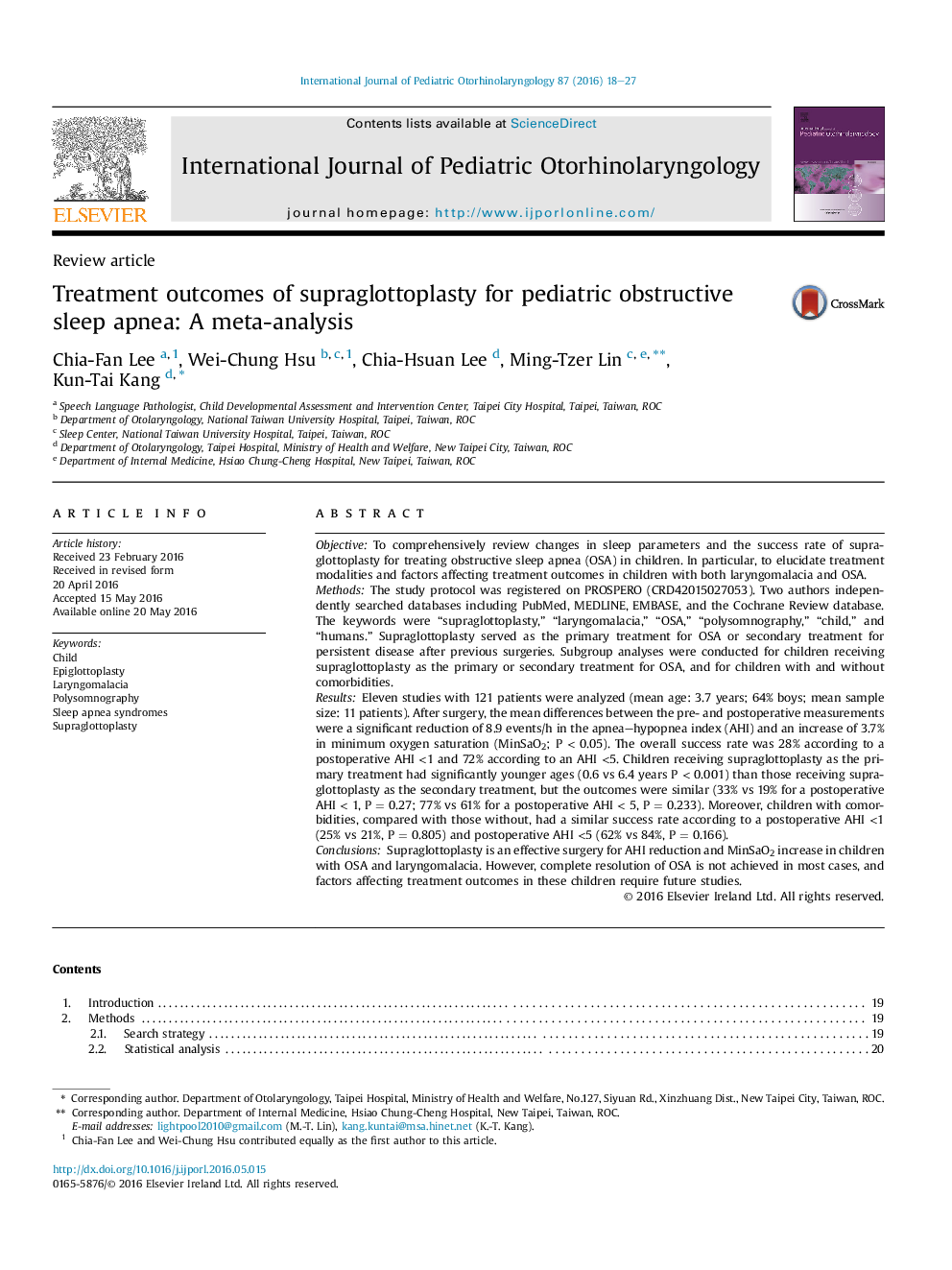| Article ID | Journal | Published Year | Pages | File Type |
|---|---|---|---|---|
| 4111432 | International Journal of Pediatric Otorhinolaryngology | 2016 | 10 Pages |
ObjectiveTo comprehensively review changes in sleep parameters and the success rate of supraglottoplasty for treating obstructive sleep apnea (OSA) in children. In particular, to elucidate treatment modalities and factors affecting treatment outcomes in children with both laryngomalacia and OSA.MethodsThe study protocol was registered on PROSPERO (CRD42015027053). Two authors independently searched databases including PubMed, MEDLINE, EMBASE, and the Cochrane Review database. The keywords were “supraglottoplasty,” “laryngomalacia,” “OSA,” “polysomnography,” “child,” and “humans.” Supraglottoplasty served as the primary treatment for OSA or secondary treatment for persistent disease after previous surgeries. Subgroup analyses were conducted for children receiving supraglottoplasty as the primary or secondary treatment for OSA, and for children with and without comorbidities.ResultsEleven studies with 121 patients were analyzed (mean age: 3.7 years; 64% boys; mean sample size: 11 patients). After surgery, the mean differences between the pre- and postoperative measurements were a significant reduction of 8.9 events/h in the apnea–hypopnea index (AHI) and an increase of 3.7% in minimum oxygen saturation (MinSaO2; P < 0.05). The overall success rate was 28% according to a postoperative AHI <1 and 72% according to an AHI <5. Children receiving supraglottoplasty as the primary treatment had significantly younger ages (0.6 vs 6.4 years P < 0.001) than those receiving supraglottoplasty as the secondary treatment, but the outcomes were similar (33% vs 19% for a postoperative AHI < 1, P = 0.27; 77% vs 61% for a postoperative AHI < 5, P = 0.233). Moreover, children with comorbidities, compared with those without, had a similar success rate according to a postoperative AHI <1 (25% vs 21%, P = 0.805) and postoperative AHI <5 (62% vs 84%, P = 0.166).ConclusionsSupraglottoplasty is an effective surgery for AHI reduction and MinSaO2 increase in children with OSA and laryngomalacia. However, complete resolution of OSA is not achieved in most cases, and factors affecting treatment outcomes in these children require future studies.
